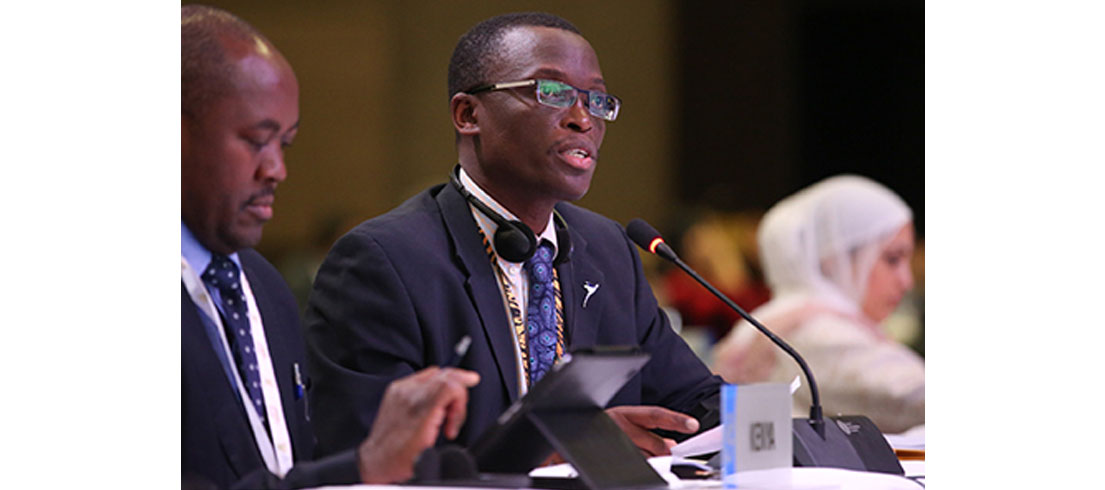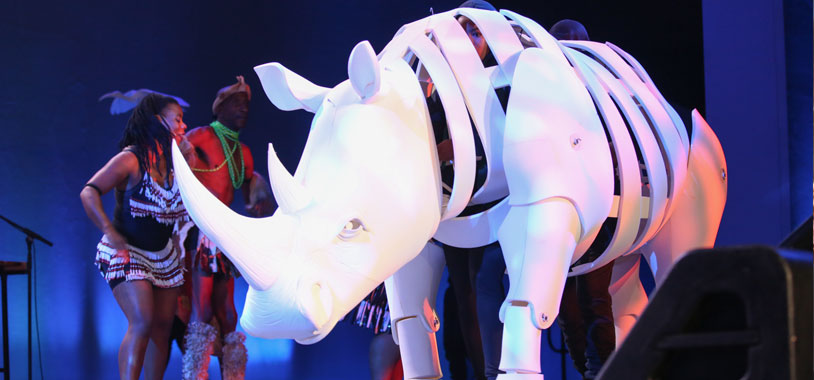The Conference of the Parties for the Convention of International Trade in Endangered Species of wild fauna and flora (CITES CoP17) began in earnest in a colourful and highly participatory opening ceremony on Saturday 24th September. To the beat of the djembe, the Save the Elephants CITES team joined all the participants to drum our support for the protection of species around the world from the cryptic pangolin to the massive wood bison.
The decisions made at this particular CITES will be particularly important for elephants. Unlike in the last crisis of the 70s and 80s, there are far fewer elephants and the demand is far too high to sustain. It is crunch time to agree on a way forward for this incredible species.
There are several opposing proposals on the table for elephants. Principal among them for us is a proposal urging all parties to close domestic ivory markets around the world. While CITES cannot compel any nation to do anything within its borders, there is a groundswell of support beginning in China and the US last year, that they would close their internal markets for ivory. This has continued through the discussions here, particularly in a recent discussion where China openly expressed support for the closure of all domestic markets, despite many voices against this discussion at a meeting to decide international trade.
The intrigues of these proposals span their substance as well as the antiques in the room. At the discussion on the Decision Making Mechanism to decide a process of trade in ivory (DMM) which Save the Elephants was against, the room was filled with confusion and suspense as parties had to vote on whether to continue discussing the mechanism or to stop it at this meeting. Clarity over what was being voted on was variable, and appeared to lead to its sudden (and welcome) demise when parties who had been vehemently arguing for its continuation, voted to kill it!
These sorts of opposition seem to exist at every level. A case in point is that our Save the Elephants exhibition stand is positioned right opposite a pro-trade rhino group! Although it is rather hilarious that we have to make nice with the proverbial “enemy”, it just going to show the grim realities we face with divergent opinions on how to solve this poaching crisis for elephants, rhinos and many other species.
Chiefly apparent at CITES this year is the lack of consensus among African nations. While the EU votes as a giant block of 29, African countries are divided along lines of consumptive and non-consumptive use of wildlife. This schism has been highly noticeable, leading to major discussions that the AU will probably be the vehicle to help us resolve our differences, so that we have a stronger voice in deciding the fate of the last stronghold for the world’s megafauna.
And in this, there is hope. Although there is overwhelming evidence about the poaching and trafficking crisis, there are also great strides forward. The world has moved from a defensive position of never admitting to there being a problem to a time when China pledges to close not just its own markets, but urges others to do the same. There have been tremendous strides in methods to identify origins and age of ivory, as demonstrated by our partners Sam Wasser and Thure Cerling.
Africa, though still hardline, is slowly coming around to the realization that we must work together to save elephants, despite differing views.
Next week, this theory will be tested. The African Elephant Coalition of 29 range states will be pushing to up list elephants to Appendix I, the highest level of protection from international trade. Others will be lobbying to remove reference to the moratorium that has held this trade at bay. Each one is doing it from a strong belief that their method will save more elephants in the long term. The countries of the world have taken sides based on these positions.
Let us hope that we can move past all of these to deal with the crisis on the ground. It has been incredible to hear all the advances made to stop the killing, thwart traffickers in innovative ways, and close domestic trade and the demand for ivory.




